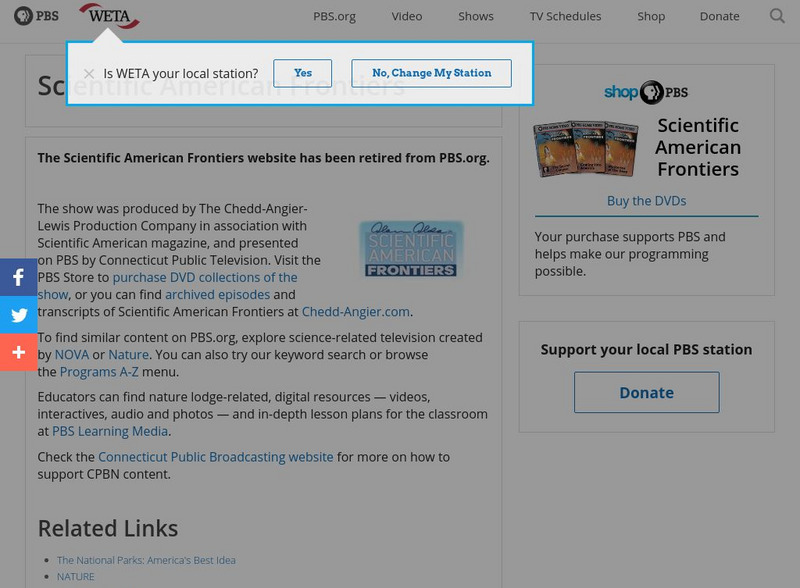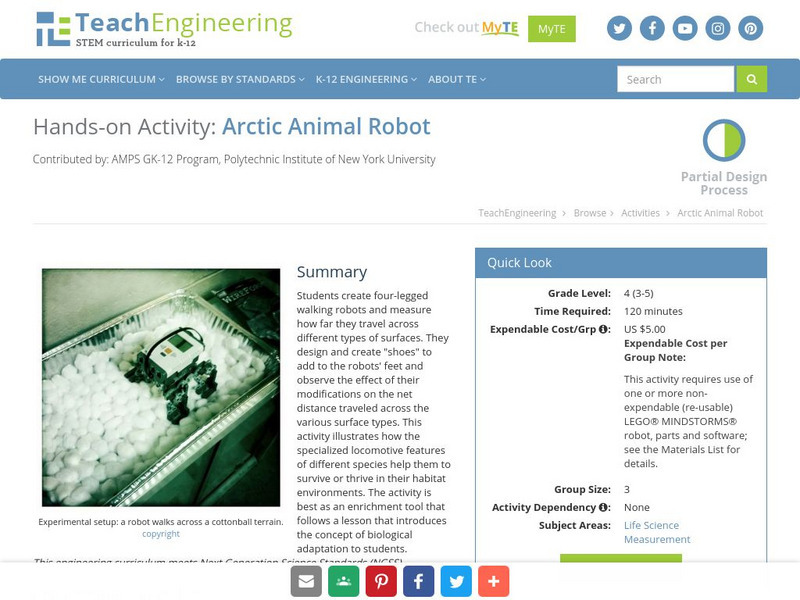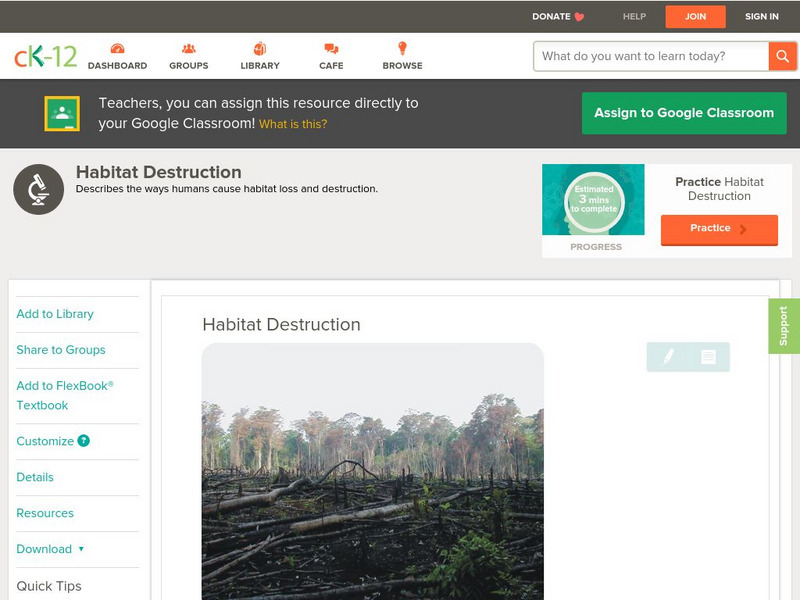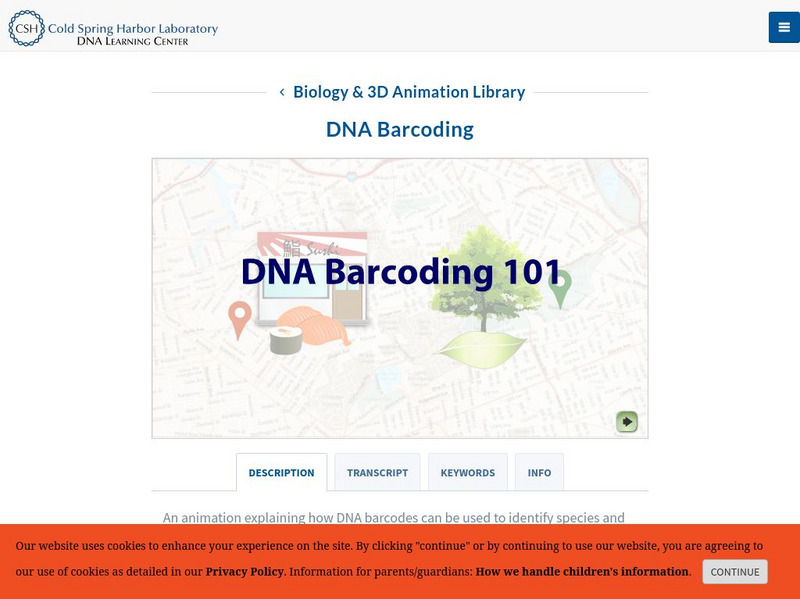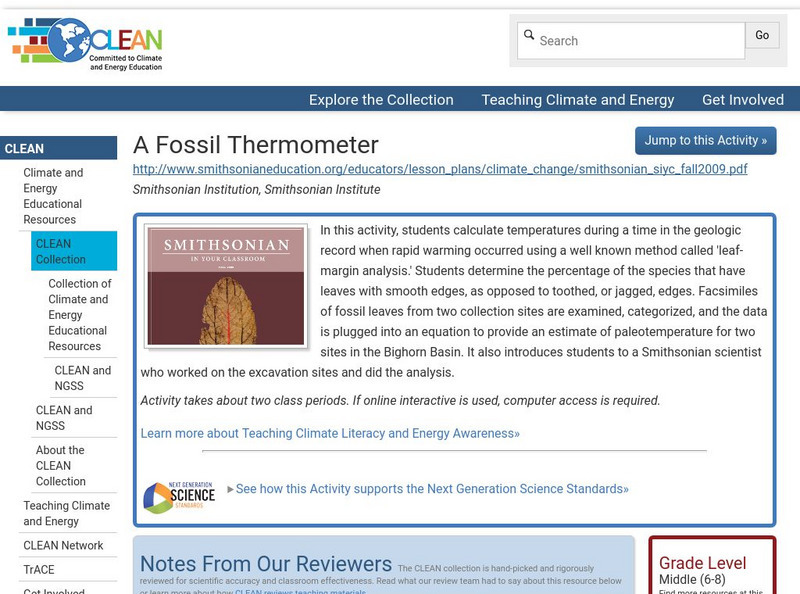Hi, what do you want to do?
Curated OER
National Park Service: Haleakala National Park
This is an informational resource from the Haleakala National Park that provides much information on the ecosystems there. Animal and plant life has faced many challenges to survive in this harsh environment, which has been wrought with...
Illustrative Mathematics
Illustrative Mathematics: F Bf Lake Algae
In this task, students analyze the amount of algae growing on the surface of a lake. The purpose of the task is to introduce students to exponential growth. Instead of giving a starting value and asking for subsequent values, it gives an...
PBS
Pbs Teachers:mediterranean on the Rocks: Turtle Hospital
Research how people affect animal populations by introducing alien species, which endanger endemic species. Map how the imported red fire ant expanded its range in the U.S. since the 1920s, and investigate the impact this alien has on...
Cosmo Learning
Cosmo Learning: Principles of Evolution, Ecology and Behavior
A collection of video lectures introducing beginning biology students to the principles of evolution, ecology, and behavior. The course was taught three times a week for a semester at Yale University. The course discusses concepts of...
Sophia Learning
Sophia: Classification of Organisms: Lesson 1
This lesson will introduce taxonomy and give an example by providing the scientific classification of an organism. It is 1 of 2 in the series titled "Classification of Organisms."
TeachEngineering
Teach Engineering: Life Science
This unit covers the processes of photosynthesis, extinction, biomimicry and bioremediation. In the first lesson on photosynthesis, students learn how engineers use the natural process of photosynthesis as an exemplary model of a complex...
TeachEngineering
Teach Engineering: Designing a Sustainable Guest Village
This lesson plan introduces young scholars to their task of designing a permanent guest village within the Saguaro National Park. The design must provide a true desert experience to visitors while also emphasizing sustainable design,...
Concord Consortium
Concord Consortium: Stem Resources: Geniverse
A virtual world where students conduct genetics experiments on a model species called drakes. After the story narrative is introduced, they engage in a quest to heal a sick dragon. As they play, they will learn about the principles of...
TeachEngineering
Teach Engineering: Arctic Animal Robot
Students create four-legged walking robots and measure how far they travel across different types of surfaces. They design and create "shoes" to add to the robots' feet and observe the effect of their modifications on the net distance...
TeachEngineering
Teach Engineering: Food Chains and Food Webs
This lesson, supported by the provided power point lecture (LESSON 1 and 2 Ecology Lecture Supplement ), introduces students to the concepts of food chains and food webs. Through its use, students learn the difference between producers...
Globio
Glossopedia: Salmon
This article introduces various species of salmon, breaking them into two groups - Pacific and Atlantic Salmon. Salmon habitat and life cycle are described. Concepts of spawning and food chain are explored. The issues of human activities...
CK-12 Foundation
Ck 12: Life Science: Habitat Destruction
[Free Registration/Login may be required to access all resource tools.] From a human point of view, a habitat is where you live, go to school, and go to have fun. Your habitat can be altered, and you can easily adapt. Most people live in...
Cold Spring Harbor Laboratory
Dna Learning Center: Dna Barcoding
An animation introducing how scientists use the unique DNA sequence called DNA barcode to identify each species of living thing. Understand the process used and the type of answers DNA barcoding can give us.
PBS
Pbs Kids: Plum Landing: Invaders!
This bustling game is a race to help Plum eliminate introduced or invasive species before they crowd out the native populations.
Climate Literacy
Clean: A Fossil Thermometer
In this activity, students calculate temperatures during a time in the geologic record when rapid warming occurred using a well known method called 'leaf-margin analysis.' Students determine the percentage of the species that have leaves...
Other
Explore Learning: Food Chain Gizmo
In this ecosystem consisting of hawks, snakes, rabbits and grass, the population of each species can be studied as part of a food chain. Disease can be introduced for any species, and the number of animals can be increased or decreased...
Smithsonian Institution
National Museum of Natural History: American Mammals: Red Fox
Red foxes are the most widely distributed wild carnivores in the world, occurring in North America, Asia, Europe, and North Africa. They are also widespread in Australia, where they were introduced in about 1850 so that fox-hunters would...







